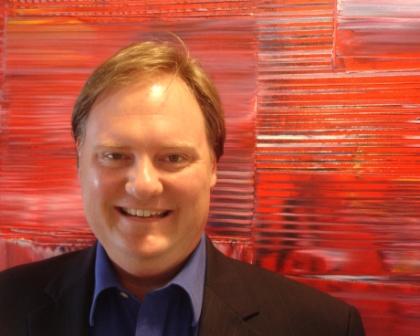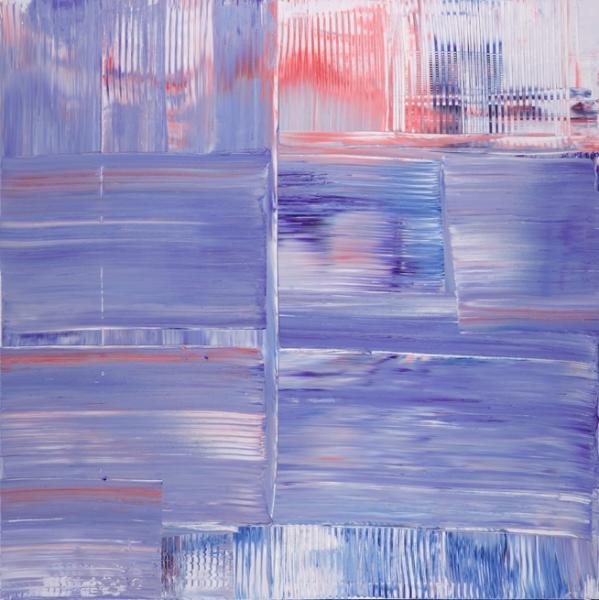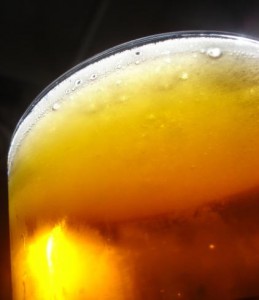Q&A with Erik Niemann
October 12th, 2010This article originally appeared on October 12, 2010 in The Island. Michele Ellson, editor.
Erik Niemann is an architect, painter, and photographer, and one of four artists currently exhibiting at Gallagher & Lindsey in Alameda, where six of his paintings are on display. G&L is a satellite venue of the Frank Bette Center for the Arts, where I curate a revolving group show with fresh art going up each month. Niemann fielded questions at his reception on September 10, and I followed up with him on September 24 to pose some additional questions.

Erik Niemann (Photo courtesy the artist)
How did you start painting?
I got my start by painting chip board that we use to make the architectural models. So once I started putting paint to a flat surface something kind of triggered inside me saying this is something I love to do, and so I just kept exploring that. And then in 2002 I became a professional artist. Started keeping my receipts.
You’ve got a distinctive style with richly textured lines. What’s your technique?
Basically it all comes from my architectural background. I’m very interested in lines and striations. And I paint in a 90 degree angle. So I walk around the painting that’s sitting on the table. As I’m painting it, I’m creating the painting from various sides. And I don’t have any particular orientation, so it works in every orientation. And then eventually when I put it upright, take photographs, and put it on the web, then I orientate it to a specific liking.

“Quantum Winter” (2008)
Your painting is rooted in your architectural background, but what painters influenced you?
Gerhard Richter. We share similar techniques where we move the paint back and forth with flat tools. So that alone interests me, but also how he is able to create different layers of paint, and then bring those layers up to the surface. I do that as well with my paintings. He of course has many, many more decades of experience in achieving mastery of that. His paintings are also very architectural in the sense that they are very linear and elegant that way, very complex. I found out about Edward Corbett when I was doing my architectural thesis when I went to grad school (at the Architectural Association) in London, and I happened to pick up a book about his retrospective at the Richmond, California Art Center back in ’91. And I was just completely fascinated by the depth, the spatial elements that he would create in his paintings. Very subtle, very spacious, very soft. So those two. And also Edvard Munch. His kind of human emotion, and that ethereal quality. I picked up on that.
In addition to being a painter, you are a photographer. Tell me about your series of cocktail photos.

“Beer” (2010)
I just found myself taking photos whenever I went out, especially of the drinks. And I really quickly became fascinated about the space of the drink, and also specifically about the underside of a head of beer cast in sunlight. And as an architect … I’m fascinated with space and surfaces. And so this is similar to the underside of a pool, or underside of the ocean, and creates an interesting space most people normally don’t see. The way I take my photos of drinks is I typically take it lower in the drink looking up into the drink, so it really captures the spatial essence of the liquid, interplayed with the glass and light.
I understand some of your work ended up in East Timor.
Somebody once told me about the Art in Embassies program from the State Department. And then one day it popped in my head, and I went to their website. And I just submitted my website, and my name and e-mail address. That’s all they wanted. Six to nine months later I got an e-mail saying the new ambassador to East Timor likes your work and was wondering if we could borrow three of your paintings for three years. And I said sure. I was going to send them some three-foot-by-three-foot paintings but came to find out that the aircraft that lands in East Timor is much smaller, so the three-foot-by-three-foots were going to be too big. So I created a series of two-by-twos. I created six of them and then showed the curator at the State Department online, and then she picked three to go to East Timor. So that was a really great opportunity.
Niemann’s work can be seen at Gallagher & Lindsey at 2424 Central Avenue through December 1. His studio at 2516 Blanding Avenue is open from 6 p.m. to 9 p.m. on the second Friday of every month for Estuary Art Attack. He will also be showing at the Gatehouse at the entrance to Fort Mason the weekend of October 23-24 for ArtSpan SF Open Studios. His website is http://www.ErikNiemann.com.
Michael Singman-Aste
Postdiluvian Photo
Tags: Alameda, Bridgehead Studios, Erik Niemann, Estuary Art Attack, Frank Bette Center for the Arts, Gallagher & Lindsey, Oakland



Leave a Reply
You must be logged in to post a comment.